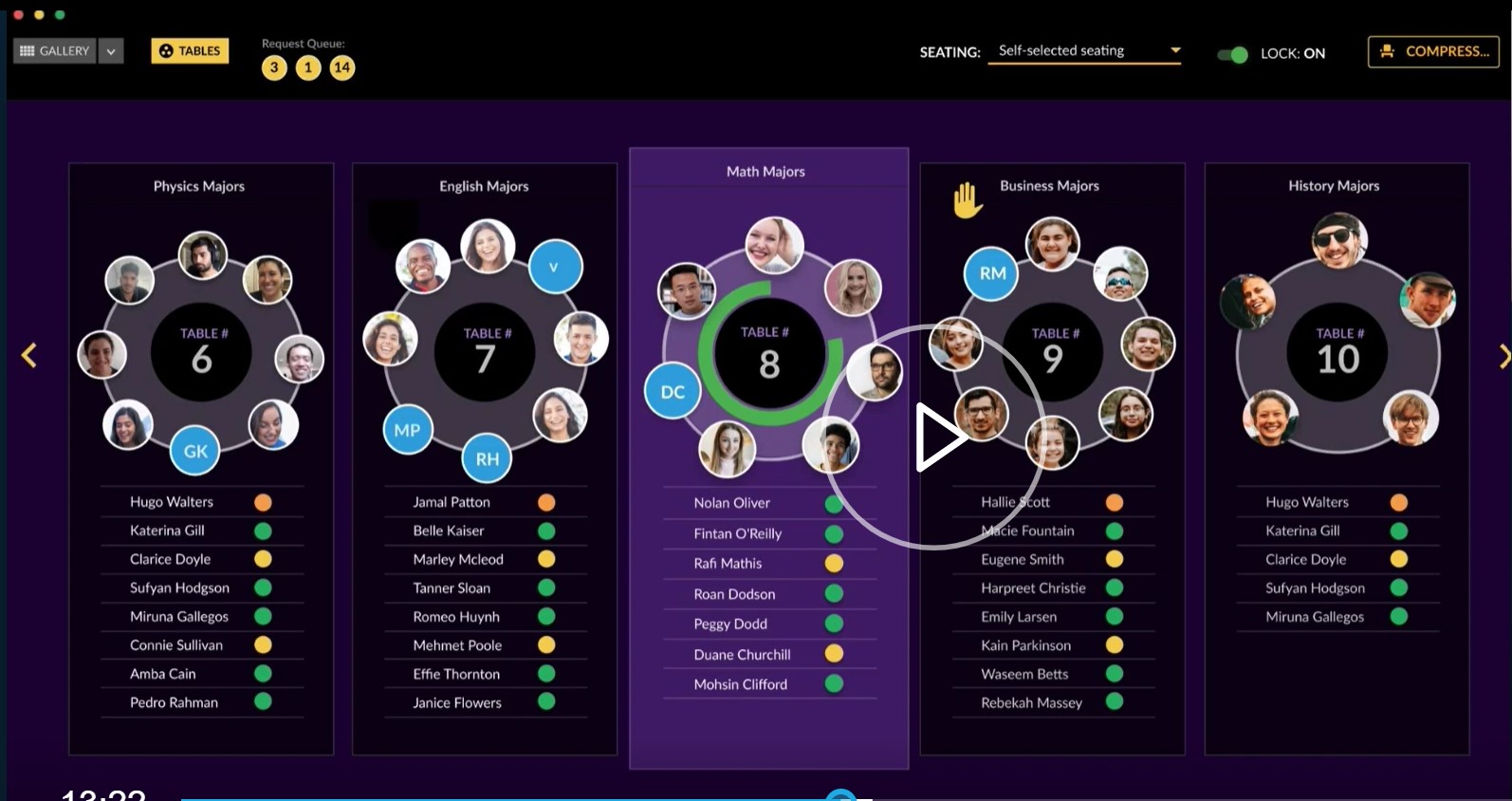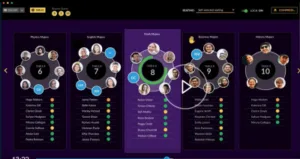I, like all other CES 2021 registrants, have been receiving emails from the Consumer Technology Association to please, please log in to CES 2021 before it goes off line in a couple of weeks.

So I did that, and found a panel session on learning and teaching systems. The systems use standard IT display products, but they are broadly interesting, as you will see. The panel, “The Classroom of the Future” was first accessible on January 12, 2021.
Moderator Betsy Corcoran, a well-known educational consultant led off by saying prior to 2020
“no one would have predicted that the most important learning platform we all have would be a video screen,” but “the video screens we’ve been using to educate people were not built for learning.”
Sharan Chandradath Singh of the international Minerva Project, observed that after a year of wrenching change and anxiety,
“what we’re seeing is that educational institutions have come to the realization that this is the new normal. There is no question. Even if we go back in the short term to largely physically based traditional models of education, there is now a defined alternative pathway. And that pathway is picking up steam and becoming much more substantial.”
Corcoran introduced Dan Avida, CEO of Engageli, as being instrumental in founding Coursera, along with his wife. He started Engageli as direct response to the Covid situation. When the Avida family locked down they saw their high-school-aged daughters were using Zoom as an education platform, but Zoom is designed for conferencing, not education. They looked for a true educational platform but found nothing appropriate. So they developed Engageli, an educational platform built from the ground up based on teacher inputs. It is a teaching/learning platform focusing on inclusivity and engagement.
Different Consoles for Different Folks
Instructors and students see different consoles geared to their educational needs. The instructor sees information such as active participants, raised hands, and most and least engaged students. Live individual engagement analysis for each student is available on demand based on explicit and implicit measures of engagement the system calculates.
One of the screens offered to students is for a breakout session in which the students working on a project see each other and the document on which they are collaborating. Unlike Zoom, in which the instructor is isolated from a breakout session, Engageli allows each student group to hear the instructor.
Another instructor view is of “tables” at which each of the breakout groups sit. He can choose to talk to any of the tables.
 This Engageli screen allows an instructor to see all of his or her students in their workgroups. The colored dots indicate degree of student engagement, a hand can be raised to ask a question, and there is a request queue. The instructor can speak to any “table” he or she chooses. (Screen shot: Engageli) Click for higher resolution
This Engageli screen allows an instructor to see all of his or her students in their workgroups. The colored dots indicate degree of student engagement, a hand can be raised to ask a question, and there is a request queue. The instructor can speak to any “table” he or she chooses. (Screen shot: Engageli) Click for higher resolution
The big issue with on-line teaching is not the technology; it’s the teaching, said Singh. Technology tends to amplify both the strengths and weaknesses of instructors.
“An important issue is that many teachers, especially in higher education, are not trained teachers. Good teaching matters.”
Technical features are great but it’s important to understand how one thing interplays with another: sequencing, layout, duration. “At the end of the day learning is a social experience. It requires interaction, formative feedback, affirmation, and reformation. The physical classroom works so well because you have that engagement and interactivity that is often lost [on a remote platform].” These features can be achieved on a remote platform, but students can game the system, ignore it, or do other things. “So you also have to capture their imagination. This can only be accomplished through very clear curriculum redesign and best-practice pedagogical approaches.”
Corcoran: What did you intentionally leave out of your platforms?
Avida: We left out gaze tracking because people thought it was very invasive. The two groups at universities that are most neglected are students and professors, so we concentrated on giving both of them a great experience. Another thing we leave out is that we do not record the students.
Singh: We are trying to imagine what the university of the future looks like, and even what education in the future looks like. We feel that things like information management and tracking are not critical to great teaching and learning so we don’t emphasize them. Instructional design is not much done in universities and it’s very important.
Corcoran: It’s January, so I’ll ask both of you to make a prediction. By the end of 2021, what percentage of university students will be engaged in hybrid learning?
Singh: Universities will return to in-person education because the business model is based on brick and mortar, but they will have developed on-line capabilities so some hybrid education will be incorporated and will grow over the next three to five years. I’d say 20% of a student’s time will be spent on hybrid learning. But the tools will become so good that I expect fully on-line institutions to be thriving by the end of the decade.
Avida: For some time the majority of students in the U.S. have been non-traditional students, and for them on-line education is way easier.
This is Ken again. For the sake of inclusivity, these and other modern educational platforms are designed to run on whatever computer a student has. The idea of designing hardware especially to enhance the students’ and the educators’ experience of the platform is risky. Digital textbook readers — think a Kindle with a large screen and (preferably) color — have not taken off. But Google cleverly designed the Chromebook for primary and secondary education, making it simple, rugged, inexpensive, and connected, and school systems buy them in large numbers.
Would the combination of Engageli or Minerva with an optimized PC be an attractive package for universities to sell to their students? What would that optimization look like? Feel free to run with this product concept — if you’re a lot more reckless than I am. (KW)
Ken Werner is Principal of Nutmeg Consultants, specializing in the display industry, manufacturing, technology, and applications, including mobile devices, automotive, and television. He consults for attorneys, investment analysts, and companies re-positioning themselves within the display industry or using displays in their products. He is the 2017 recipient of the Society for Information Display’s Lewis and Beatrice Winner Award. You can reach him at [email protected] or www.nutmegconsultants.com.

